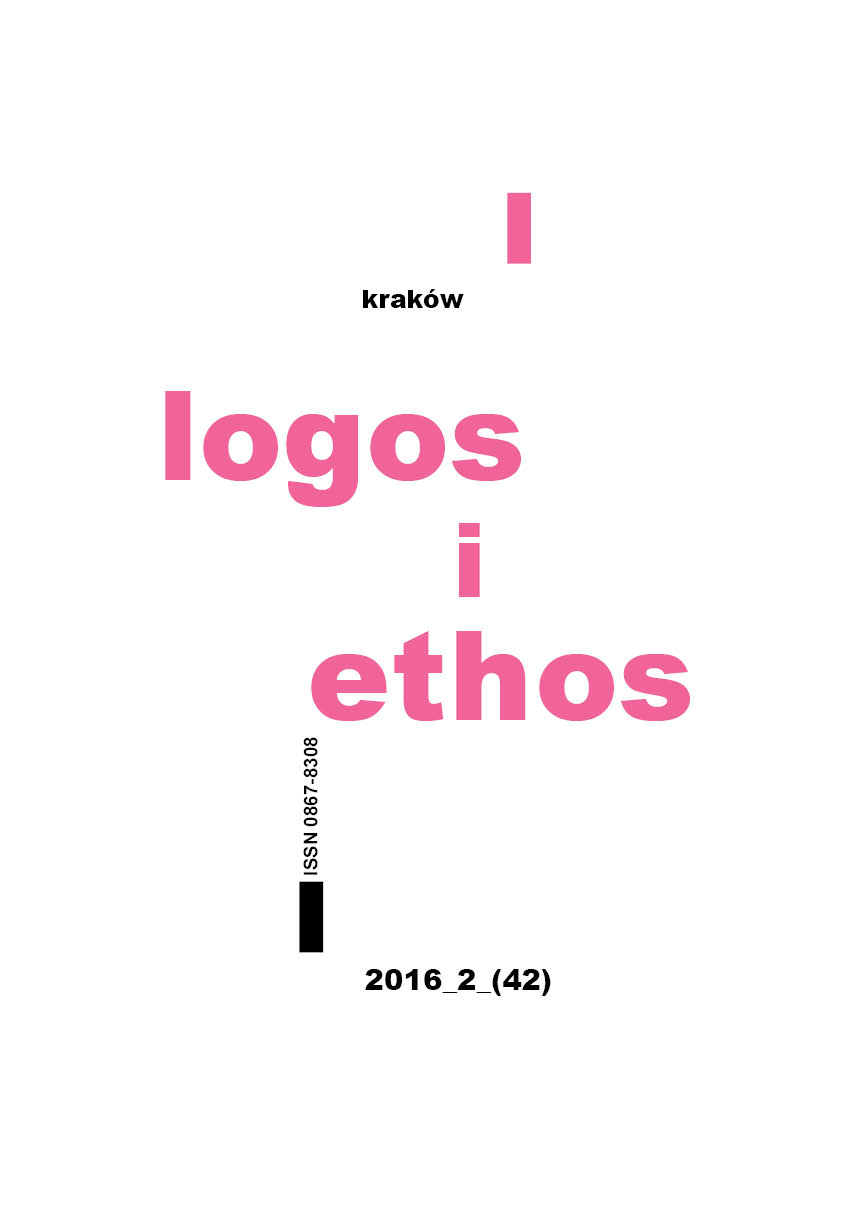Allegory in hermeneutic tradition. Gadamer’s rehabilitation of allegory
DOI:
https://doi.org/10.15633/lie.1915Keywords:
St Augustine, H.-G. Gadamer, Homer, I. Kant, allegory, philosophical hermeneutic, symbolAbstract
The notion of allegory is bounded with rhetorical and hermeneutic traditions. In the rhetorical tradition allegory is a technique of encrypting given content. However, when we consider the need of deciphering this content, we face the hermeneutic interpretation of allegory. Allegory becomes a tool of interpretation. Thanks to applying allegory one can reveal a hidden truth of the text. This paper is an attempt to present allegory in the latter meaning – in hermeneutic tradition. Its hermeneutic meaning – form ancient Greece to the Baroque – was bounded with dogmatic interpretation of a message. Homer was the first one who applied allegory into interpretation of the myths. In the time of Patristics a need of allegorical understanding of the Holy Scripture appeared. In medieval times allegory played double role: philosophical-theological and aesthetical.The meaning of allegory was first contested in its appliance into Bible in the time of the Reformation. The last period of confidence with allegory was the Baroque. A downturn of its applying as a tool of reaching the truth started at the age Enlightenment. Gadamer claims, that Kant’s aestheticization of the art was mainly responsible for depreciation of allegory, as according to Kant the only thing that a work of art presents us is beauty.
Gadamer objects to Kant’s aestheticization of art. As a result of rehabilitation of allegory he contested aestheticization of a work of art and its narrowing to a product of a genius. In his view, in our experience of a work of art not only we face beauty but also a truth about ourselves and the world sorrounding us.
References
Św. Augustyn, O nauce chrześcijańskiej, tłum. J. Sulowski, Warszawa 1989.
Św. Augustyn, O Trójcy świętej, tłum. M. Stokowska, Poznań–Warszawa– Lublin 1963.
Grondin J., Wprowadzenie do hermeneutyki filozoficznej, tłum. L. Łysień, Kraków 2007.
Léon‑Dufour X. SJ, Słownik Nowego Testamentu, tłum. bp K. Romaniuk, Poznań 1986.
Domaradzki M., Filozofia antyczna wobec problemu interpretacji. Rozwój alegorezy od przedsokratyków do Arystotelesa, Poznań 2013.
Gadamer H.-G., Aktualność piękna. Sztuka jako gra, symbol i piękno, tłum. K. Krzemieniowa, Warszawa 1993.
Gadamer H.-G., Klassische und philosophische Hermeneutik, [w:] H.-G. Gadamer, Gesammelte Werke 2. Hermeneutik II, Tübingen 1993, s. 92–117.
Gadamer H.-G., Mythos und Logos, [w:] H.-G. Gadamer, Gesammelte Werke 8. Ästhetik und Poetik I, Tübingen 1993, s. 170–173.
Gadamer H.-G., Prawda i metoda. Zarys hermeneutyki filozoficznej, tłum. B. Baran, Kraków 2004.
Grelot P., Typ, [w:] Słownik teologii biblijnej, red. X. Leon‑Dufour, tłum. bp K. Romaniuk, Poznań‑Warszawa 1985, s. 992–997.
Hegel G. W. F., Wykłady o estetyce, tłum. A. Landman, t. 1, Warszawa 1964.
Kant I., Krytyka władzy sądzenia, tłum. J. Gałecki, Warszawa 1986.
Lévinas E., Całość i nieskończoność. Esej o zewnętrzności, tłum. M. Kowalska, Warszawa 1998.
Pöltner G., Estetyka filozoficzna, tłum. J. Zychowicz, Kraków 2011.
Reale G., Historia filozofii starożytnej, tłum. E. I. Zieliński, t. 5, Lublin 2002.
Ricoeur P., „Symbol daje do myślenia”, tłum. S. Cichowicz, [w:] P. Ricoeur, Egzystencja i hermeneutyka. Rozprawa o metodzie, opr. S. Cichowicz, Warszawa 1985, s. 58–75.
Ripa C., Ikonologia, tłum. I. Kania, Kraków 1998.
Sarnowska‑Temeriusz E., Alegoria, [w:] Słownik literatury staropolskiej, red. T. Michałowska, Wrocław–Warszawa–Kraków 1998, s. 20–26.
Seils M., Symbol, [w:] Historisches Wörterbuch der Philosophie, Hrsg. J. Ritter, K. Gründer, t. 9, Basel 1998, s. 725–729.
Sołtysiak M., Symbol hermeneutyczny a symboliczność dzieła sztuki według Hansa‑Georga Gadamera, „Logos i Ethos” 2014 nr 2 (37), s. 21–46.
Wojciechowska K., Alegoria, [w:] Religia, red. T. Gadacz, B. Milerski, t. 1, Warszawa 2001, s. 138–139.
Wojciechowska K., Alegoryczna interpretacja Biblii, alegoreza, [w:] Religia, red. T. Gadacz, B. Milerski, t. 1, Warszawa 2001, s. 139–141.
Tatarkiewicz W., Historia estetyki. Estetyka nowożytna, t. 3, Warszawa 1991.
Downloads
Published
Issue
Section
License
Authors who publish with this journal agree to the following terms:
- Authors retain the copyright and full publishing rights without restrictions, and grant the journal right of first publication with the work simultaneously licensed under a Creative Commons Attribution 4.0 International License that allows others to share the work with an acknowledgement of the work's authorship and initial publication in this journal.
- Authors are able to enter into separate, additional contractual arrangements for the non-exclusive distribution of the journal's published version of the work (e.g., post it to an institutional repository or publish it in a book), with an acknowledgement of its initial publication in this journal.
- Authors are permitted and encouraged to post their work online (e.g., in institutional repositories or on their website) prior to and during the submission process, as it can lead to productive exchanges, as well as earlier and greater citation of published work (See The Effect of Open Access).

